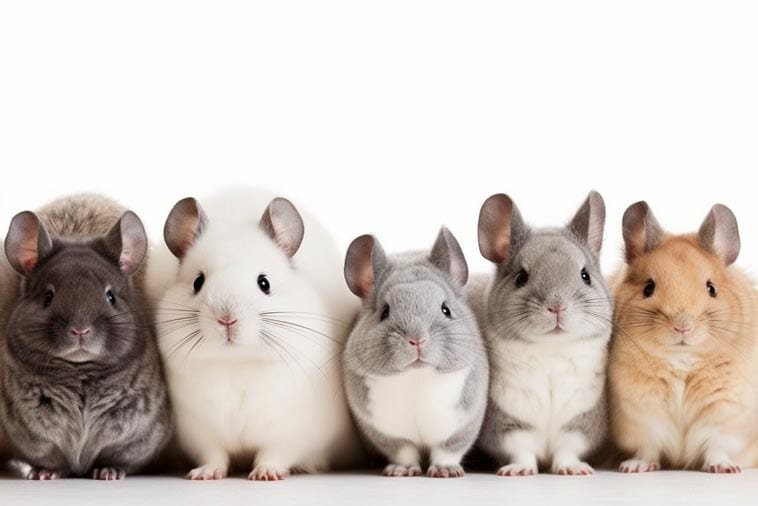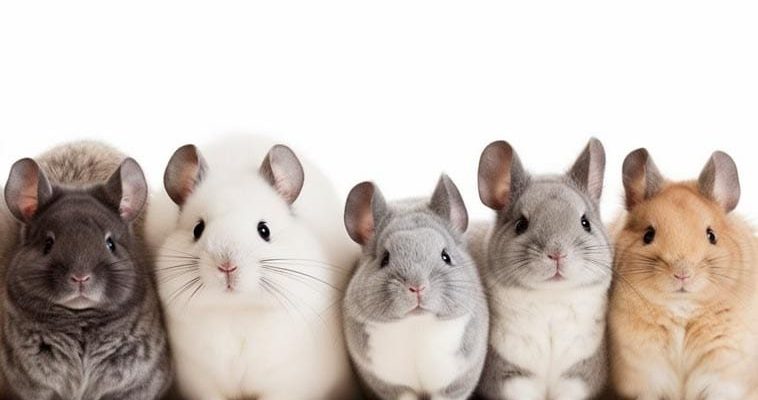
Violet chinchillas are unique among their kind. Their beautiful, soft coats come from a specific genetic makeup that makes them stand out in the chinchilla community. Knowing how these traits are inherited can help you appreciate these little furballs even more. So, let’s explore the genetics and breeding principles that underlie the violet chinchilla and what makes them so special.
Understanding Chinchilla Genetics
Genetics can seem a bit like magic, but in reality, it’s all about the science of heredity. At its core, each chinchilla inherits genes from its parents, which dictate everything from their color to their health. The basic unit of heredity is the gene, and in chinchillas, these are responsible for traits like fur color, texture, and even personality.
Now, chinchillas have a pair of chromosomes that they inherit from both parents. Each gene can have different forms, known as alleles. For instance, when you hear terms like *dominant* and *recessive*, you’re diving deeper into how these alleles interact. If the violet gene is dominant, it’s more likely to show up in the offspring. Remember, it’s not just about one gene; it’s the combination of many that creates the chinchilla you see!
Here’s a fun thought: when breeding chinchillas, it’s much like mixing paint. You might start with blue and yellow, which can create green, but add a little red and you get something entirely different! The same applies to genetic combinations in chinchillas, where different genes blend to produce varied colors and patterns.
What Makes the Violet Chinchilla Special?
The violet chinchilla isn’t just another pretty face in the chinchilla world. Their luxurious fur has a unique hue that’s a result of a complex genetic background. The color itself is due to a specific mutation in one or more genes that affect pigmentation.
Typically, violet chinchillas have a soft, muted purple tone, which many find alluring. This beautiful coloration comes from the recessive allele, which means both parents must carry the gene for a violet offspring to appear. This is what makes breeding them a bit challenging but also rewarding!
Breeders love the violet chinchilla not only for their striking appearance but also for their friendly temperaments. They often display playful, curious personalities, making them sought-after companions. Think of them as the “cool kids” in the pet world!
Breeding Violet Chinchillas: The Basics
Breeding chinchillas isn’t just about pairing two beautiful animals; it involves understanding their genetic compatibility. When you decide to breed violet chinchillas, you need to have a clear plan. Start by ensuring both parents are healthy and genetically tested.
Here are a few key points to consider:
- Health Screening: Regular vet check-ups can help identify any potential genetic issues that may arise.
- Pedigree Knowledge: Knowing the family tree can help you avoid inbreeding, which can lead to health complications.
- Breeding Goals: Determine what traits you want to promote, be it color, temperament, or health.
It’s essential to keep a close eye on the genetic outcomes you’re aiming for. Keeping records of each breeding pair can help in making informed decisions for future breeds.
The Science of Color Inheritance
If you’re genuinely interested in the genetics of violet chinchillas, understanding color inheritance is a must. To put it simply, chinchilla color genetics can be a bit like a game of chance mixed with definite rules.
Violet is classified as an *amorphous gene*, which means it can exhibit different shades depending on the genetic makeup of the parents. For example, a pair of violet chinchillas might produce all violet offspring if they both carry the gene. However, if one parent is a standard color, there’s a chance for a mix of hues.
In genetic terms, the outcome depends on whether the allele you’re working with is dominant or recessive. Breeders often utilize various color combinations to produce the best results. That’s the beauty of genetics—there’s always a bit of uncertainty, akin to baking without a recipe!
Common Challenges in Breeding
Breeding violet chinchillas comes with its share of challenges. One significant concern is the possibility of genetic disorders. Like many animals, chinchillas can inherit issues if not bred responsibly.
A common problem is inbreeding, which occurs when closely related animals are bred together. This can increase the risk of genetic disorders and health issues. An excellent practice is to introduce unrelated chinchillas to diversify the gene pool.
Here are a few challenges you may face:
- Health Issues: Regular check-ups can help catch potential problems early.
- Color Variance: Be prepared for surprises in color, especially with mixed genetics.
- Temperament Fluctuations: Not all offspring will inherit the desired personality traits.
Being aware of these challenges can help you prepare better and lead to more successful breeding outcomes.
The Role of Environment in Breeding
While genetics plays a significant role in breeding, the environment is equally crucial. Chinchillas thrive in specific conditions that promote healthy breeding and development.
Factors such as diet, living space, and social interaction can significantly influence the well-being of your chinchillas. A proper diet rich in hay, pellets, and occasional treats helps maintain their health and promotes strong, robust offspring.
Here are some key environmental factors to consider:
- Clean, Spacious Living Conditions: Ensure they have enough room to hop around and play.
- Temperature Control: Chinchillas are sensitive to heat, so keeping a cool, well-ventilated space is crucial.
- Social Needs: They are social creatures, so interaction with humans or other chinchillas is vital.
Creating a comfortable and stimulating environment can help produce happy and healthy chinchillas.
Breeding violet chinchillas is not just about the outcome; it’s about the journey. From understanding the genetics that make them unique to providing the proper care and environment, each step is part of a beautiful process. Whether you’re a seasoned breeder or just fascinated by these little creatures, knowing the ins and outs of their genetics can deepen your appreciation for them.
So, if you find yourself considering breeding violet chinchillas, remember to embrace both the science and the joy of it. Take your time, do your research, and enjoy every moment with these lovable little furballs. They aren’t just pets; they’re a connection to nature’s wonder, all wrapped up in a soft, entertaining package. Happy chinchilla parenting!

